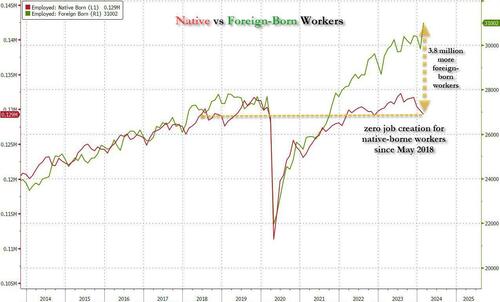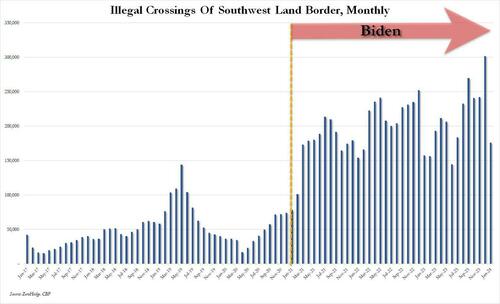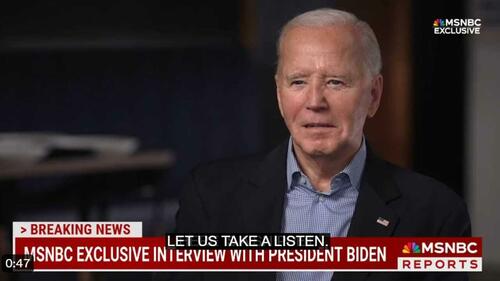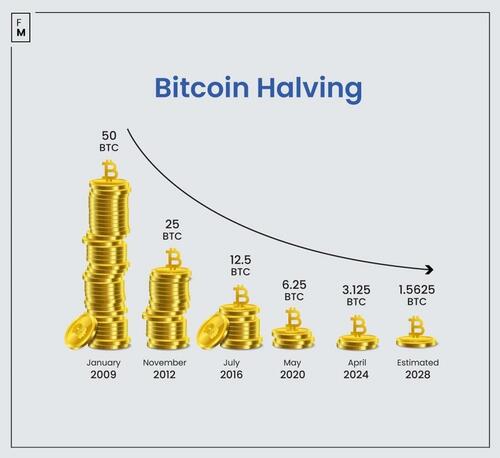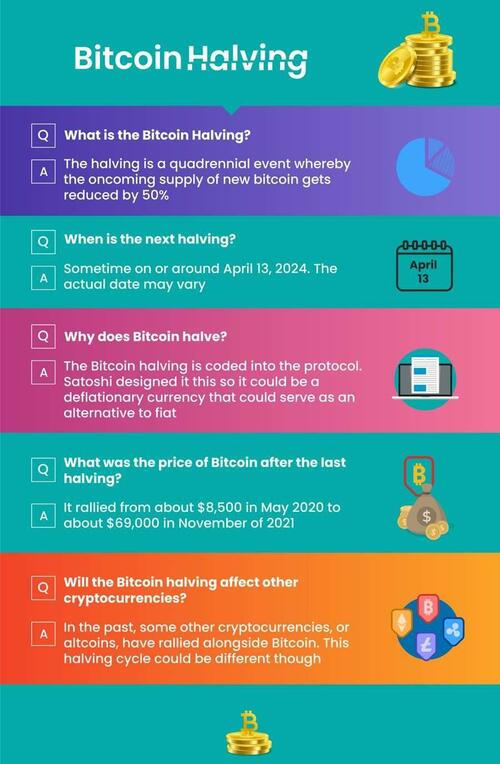By Peter Tchir of Academy Securities
The Threat of “Made by China 2025”
I cannot remember the first time that we discussed the transition from “Made in China” to “Made by China.” I do know that back in April 2023 we Locked in Some Themes, one of which was the Made by China theme. We also framed the discussion around the dollar, the yuan, and “reserve currency” status using the “Dark Web” as a useful way to think about it. Some reports age better than others, and that report seems to have aged particularly well.

“Made by China” has been a theme that we have been using more and more. We are also starting to see it referenced more frequently. Not usually in those exact words (which we are trying to coin for ourselves) but the concept is the same – stiffer competition from Chinese goods makers.
While in Chicago this week, we were able to discuss this in more detail on the Schwab Network in a segment they titled “Potential China Strategic Shifts.” It also came up in a Yahoo Finance interview that focused more on my bearish outlook for U.S. equities, but it did get incorporated. It may also have come up during a discussion with Rick Santelli at CNBC on Friday afternoon, but there isn’t a link available, and the interview and prep was such a blur that I cannot remember what was said on versus off-air. Well, I know a few things that were definitely not said on air, but that’s another story! In any case, I should have brought more than one tie to Chicago.
Marching in Plain Sight
General (ret.) Spider Marks, who spent much of his career in Asia as a senior intelligence officer, often discusses how China does things “in plain sight.” They tell us what they are going to do, and then they do it, and somehow we often seem surprised. I won’t harp on this theme, but it will permeate the report.
I’m seeing references to China’s “Minsky Moment” on social media. The concept that China is somehow going to lay down and die, give up decades of growth, and succumb to an aging population and a falling real estate market seems almost ludicrous. Yet, that view seems to be far closer to the consensus than Made by China, despite lots of evidence that communist leaders rarely go down without leaving it all on the field.
To ensure that I wasn’t completely off base, I spent a couple of minutes searching for China 2025. All sorts of references to Made in China 2025 popped up. Article after article, all done back in 2015! General (ret.) Walsh and I discussed this Thursday in preparation for today’s report. General Walsh played a key role in the national defense policies elevating China to a “Strategic Competitor.” He was also instrumental in our 2019 report – A D.I.M.E Framework for China, Trade & Strategic Competition.
The main gist of our conversation was that China never stopped with the China 2025 initiative. They just publicized it less because it was attracting “the wrong sort of attention” in D.C. (at least from the perspective of China). They backed off discussing it because it made people concerned that China was going to change their relationship with us to a more competitive one on the goods side of things. That concern may have led to policies to thwart their efforts, so they backed off (at least publicly). Maybe this section should have been titled “out of sight, out of mind?”
Back in 2015, China told us what they wanted to look like by 2025. Yet, here we are, in 2024 with lots of evidence pointing in the direction that they are continuing down that path with at least a modicum of success. I would argue more than a modicum, but let’s not go overboard, at least not yet.
Fighting the Last War
Another topic that comes up at Academy as we discuss geopolitical threats and the military is the risk that generals are “fighting the last war.” While I have no military experience, I know regulators are often viewed as fighting the last crisis, and I’d have to agree that there seems to be some truth to that assessment.
We’ve often discussed that many of the views expressed by politicians seem to be based on China circa 2005, i.e., cheap manufacturing with limited IP. The reality is that just isn’t at all correct. Chinese manufacturing has grown increasingly sophisticated (as the U.S. and Europe largely ceded manufacturing to China). For some reason solar panels jump to the top of my list here, but the point is that China has developed very good (and not just cheap) manufacturing capabilities.
On the IP side, maybe it was like a seesaw (or a teeter totter) with an adult on one side and a toddler on the other (i.e. very unbalanced). But as the adult has aged and the toddler has grown up, it is much more balanced. There are some areas where China has developed much of its own IP. Think back to the China 2025 initiative and their focus on machine learning, cryptography, etc. Again – marching in plain sight.
So, I am worried that we shape policy based on an outdated view of China’s capabilities.
Which brings me to TikTok. We did include it in We Didn’t Start the Fire and it has come up periodically as an issue due to all the information that is being collected.
In theory, I should be paying more attention to the Protecting Americans From Foreign Adversary Controlled Applications Act. But I struggle to get too excited about it. First, talk about “shutting the gate after the horse has left the barn!” Yes, I’m full of colloquialisms and folksy sayings today.
TikTok in some ways seems all pervasive! It seems to be everywhere. I believe that even while D.C. has some restrictions already for certain government employees regarding their ability to have TikTok on their devices, many politicians are turning to TikTok as a part of their campaign efforts. Color me “cynical,” but I’m not optimistic that much will be done or accomplished in this day and age and who knows how much damage has already been done. Maybe not quite fighting the last war (as this war is still raging), but we certainly got off to a late start.
Made By China 2025
Please keep in the back of your mind the concepts that:
- China “marches in plain sight” and has outlined what they want to accomplish.
- We have to think about where China is going (not where they’ve been) if we are going to get this right (possibly the closest I’ve come to quoting Wayne Gretzky).
We tried to detail our thoughts in the piece titled Chess, Checkers, or Go – What is China’s Next Move? The simple version of this report is:
- Yes, the Chinese economy faces many problems. We completely agree with consensus here.
- No, China won’t just curl up and fizzle out, they will do something. As we saw during COVID, to maintain the power of the Chinese Communist Party, they will do things to appease the middle class (a few protests caused a complete reversal in their COVID policy). So, assuming Xi wants to stay in power (no indication that he/the party wants to relinquish power), he needs a strategy.
- Increased domestic consumption isn’t a great option. The Chinese consumer has not demonstrated a willingness to spend like the U.S. consumer, and with real estate down and the stock market weak, there isn’t the money to spend, even if they had a propensity to spend it.
- Increasing manufacturing for U.S. and European companies isn’t an option. More companies are extricating themselves from being reliant on China as their main production hub. Costs have been hidden, but COVID (amongst other things) exposed a lot of “hidden” costs, or costs not thought of – like complete shutdowns and the inability to access your facilities. Add in some IP protection risks and setting up new business in China isn’t top of mind. Finally, after years (and maybe even decades) of hoping to be able to compete openly and fairly in China with domestic companies, many doubt that we will. So, there is a long list of reasons why China is unlikely to think that they can increase their manufacturing of foreign products.
- So, if two obvious things don’t work, what do you do? Remember the concept of “mirroring” that we discussed in The Game of Chicken in Today’s World? Don’t think about China and brands as we see them, think about China and brands as they see them.
China has an economic problem, but there is one path that might work and it is a path that they have told us they intend to pursue (and have been pursuing).
Let’s just pause for a moment. Re-read the last sentence/rant. Maybe it sounds too simple? Maybe we don’t think of it that way, but that might be the biggest mistake that we are making.
I hear a lot of talk about “black swan” events or “grey swan” risks. Both in our geopolitical and macro conversations. I’m increasingly concerned that we are so busy looking for swans of different colors, we are ignoring the hammer hitting us in the head over and over! Is our thought process to think, “Yeah, that hammering kind of hurts, but I should ignore it and look for where the ‘real’ problems lurk?”
How it Works – Domestic Consumption
If you noticed, earlier in the piece I said that “increased” domestic consumption isn’t likely to work!
So, like any practical businessperson, if you cannot increase the size of the pie, your best bet is to increase your share of the pie. When corporate strategists sit down at the table trying to figure out how to grow market share, they can only wish they had some of the tools that China has available.
- Taxes, tariffs, content rules, etc. Companies have to lobby for these, but the Chinese government creates them. They have created them and will likely continue to use them to make “foreign” products (even those manufactured in China) less competitive.
- Outright bans. Who can use what app or what hardware? Again, corporations can put their best foot forward, but China can do (to a large degree) as they please. If you were trying to suppress domestic demand, say, for a certain type of phone, maybe you would ban government employees from using it? And over time, extend that ban to more and more agencies and levels of government.
China can make it so that foreign brands are less competitive domestically. I think there is clear evidence that is happening.
By suppressing demand for “foreign” brands to benefit Chinese brands, they can improve the “domestic” economy even if the “pie” is stagnant (or shrinking) by taking greater market share.
Let’s not forget that at the moment, certainly for the chip industry, the U.S. is doing a lot to enhance the ability to develop foundries domestically and manufacture more/higher quality chips. All countries can do things to help their domestic brands, especially domestically, but I just suspect that China will be more aggressive about it.
I’m also worried that as we restrict things for China, it will just make them better at it. I think that we’ve asked before how China is making so many phones with 7 nanometer chips, when there have been restrictions in place on chips thinner than 10 nanometers. Underestimating China can be a real risk.
Yes, some of the Geopolitical Intelligence Group members discuss the risk of “making your enemies 10 feet tall” and overestimating their capabilities, which can also lead to flawed policy. In hindsight, any assessment of Russia’s military was far too generous, which affected our behavior before and in the immediate aftermath of the invasion (the first offers were to evacuate Zelensky as Kiev was theoretically going to be overrun in a matter of days).
China has flaws and may not be able to execute on their strategies, but I suspect that we are stuck underestimating their capabilities rather than overestimating them. I must admit that I’m curious to check out what a BYD EV is like in person – at the very least to better understand the “competition”.
How it Works – Foreign Consumption
The domestic advantages seem easy enough to implement. In some industries this has been going on for years, but I would expect more rather than less of it.
The trickier issue will be how to grow foreign consumption of your brands. As with any strategy session, you look to your strengths and try to use those to leverage your position. Again, just like with their domestic efforts, the government has options not available to corporate strategists.
- Compete on price. That seems like the obvious starting point. Offer a price to quality that can compete with foreign brands.
- If you are competing on price, go to where price might be most important. I would target countries with large populations of people with some, but not a lot of money to spend. Where price will be paramount. Countries whose citizens are looking for the best quality or the cachet of owning a certain brand would not be my first choice. This leads me towards some emerging market countries – especially those that are resource rich.
- Offer trade incentives. Corporations can hope to get governments to support them in trade (export-import banks still exist across the globe, etc.), but China is the government. Interestingly, I think China has trade deficits with some countries who might have the sort of consumer China is looking for. Countries that China is buying a lot of commodities from would seem like ideal potential customers, where China can offset some of their trade deficit by getting them to buy their brands.
- Shipping. First, China has spent a lot of time, effort, and money to have access to (and in some cases control of) ports. Can they use that to their advantage? Why the heck not? The network of ports that China has built up could be used to their advantage. Could they prioritize their shipments into ports that they control? Again, maybe “we” wouldn’t even if we could (though we probably would when push comes to shove), but China operates under a different set of rules (or guidelines) than we do. So, it would not surprise me to see them leverage this network to improve distribution of their brands, potentially at the expense of others (which reminds me, I need to reach out to my shipping contacts to see if any of this is already occurring). Finally, and this might be weird, but if I’m a pirate or someone targeting shipping, attacking a Chinese ship would be low on my list, purely out of fear of retribution. Immediate, direct, and harsh retribution. Not proportionate to what was done, and they will send a message to never, ever, do it again.
- Never underestimate the willingness of the American consumer to buy anything. While the American consumer wouldn’t be my first choice, why not try? I had never heard of Temu before the Super Bowl. I just hadn’t. To be honest, I’m a little nervous even going on the site (I assume that they, like TikTok, will use my information). I did a search for golf range finders (if China needs Temu to figure out that I’m a golf addict, their AI is way worse than I thought). I couldn’t find one listed for more than $100, which seems pretty cheap. On Golf Galaxy, there was one for $150, a couple for $200, and several that were much more costly. Though I recognized most of the brands at Golf Galaxy, I cannot say that I recognized any of the brands on Temu (and I was nervous to click on more than one – maybe I’m just paranoid). But if Temu isn’t an attempt to sell Chinese brands into America based on price, then what is it? Super Bowl commercials have ranged from iconic (Apple’s 1984 is still one of my favorites), to a staple (Budweiser horses), to things that have fizzled (too many to count), and to things that surprised some with their staying power (E-Trade babies are back!). When I mention Temu, I mostly get sideways glances, if not outright smirks, but why? Why dismiss something so easily that fits with what I would do if I was a strategist for China Inc.?
Selling brands to different countries will be more difficult than increasing their domestic market share. But, as the CEO of Mercedes reminded viewers on Bloomberg TV a few months ago, at one time, Mercedes too was a “domestic” brand.
The development of brands, first domestically and then in foreign markets, is a standard practice – why wouldn’t it be for China?
Implications for Investors and Companies
There are a few things that seem obvious and may already be playing out on a limited scale. Some might be further down the road if I’m correct, but that just means there is time to develop effective strategies to combat the risk.
- Relying on sales into China. I would expect it to get more difficult to sell into China than easier. Forecasts for sales into China need to be checked and double checked. One also needs to play “devil’s advocate” for what potentially could be done to either thwart your sales, or to enhance the sales of domestic brands.
- Selling into the most price-sensitive economies. Where price is extremely high on the purchase decision-making tree, what risk is there of competition from a Chinese brand? The initial reaction might be to be “dismissive.” Their brand can’t do what ours does. Probably true. Our brand has IP, and we would sue them (possibly true, but is it winnable especially if the Chinese government is supporting sales of the brand into that country?). Maybe after a thorough analysis, there is no risk, but I would think long and hard about that. Assume an uneven playing field. Assume you are up against a leadership that does not want to lose control and has tools at their disposal beyond what leaders in the Western world have. If the assessment is still good even after thinking of “worst case” possibilities as the “base case,” then all is fine. But I think it is too easy to be dismissive, and that is a risk for investors and corporations.
- Chinese suppliers and shipping. This is probably “next level” stuff, but if there was an effort to thwart brands and products, shipping and suppliers might be used in that battle. It is probably next level but cannot be dismissed out of hand. One obvious risk already is in the chip industry. There is agreement here that the “highest level technology” needs to be protected but defining that in a way that works could prove tricky over time.
- Bad inflation. As supply chains shift and shipping gets more complicated, we could see inflation rise. The cost of goods for domestic companies could increase, passing inflation to buyers in many regions.
- Bad deflation. If China competes on price, then its competitors will likely have to compete on price, which will be a direct hit to profit margins.
Bottom Line
I can think of no greater or more obvious risk to our economy and stock market valuations than the rise of Chinese brands globally. Not tomorrow’s risk or even next year’s risk, but it is the sort of risk where in 5 years, we will look back and wonder how we got it so wrong – especially since it has been in plain sight!
The good news is that there is time to plan, prepare, and win.
- Without a doubt, many companies are already ahead in this battle and doing what it takes to be successful under a variety of competitive circumstances.
- China, assuming they are pursuing this strategy, has to get a lot of things right. They need a lot of things to work in their favor. They may not get what they need or may not execute, but I wouldn’t rely on that as being my strategy.
We can get back to living in markets that rise and fall 1% in a day (sometimes more), but I really wanted to make sure this message on “Made by China” is heard loud and clear as I think it is vital to understand and prepare for.
And yes, currently I’m long FXI (I think that Chinese stocks are un-investible, but are tradeable) and short QQQ (lots of things pointing me to the risk/reward being skewed to more downside risk than upside risk in the near-term). For the “normal” macro stuff see:
Good luck today, tomorrow, and beyond. I’m actually optimistic on the “beyond” front, but I’d be more comfortable if I felt more people, at all levels, were taking the Made by China theory more seriously.

